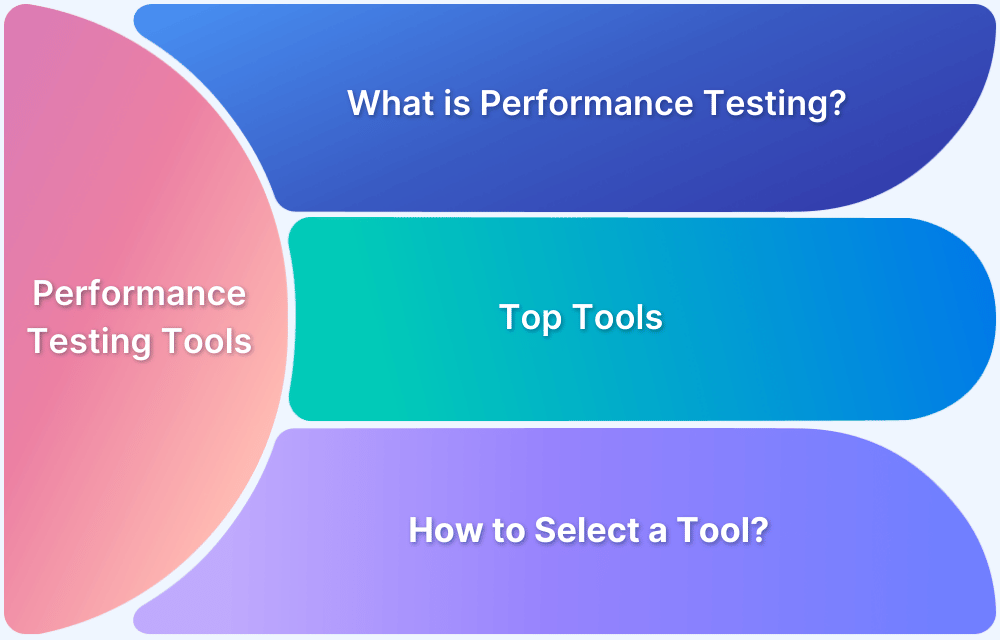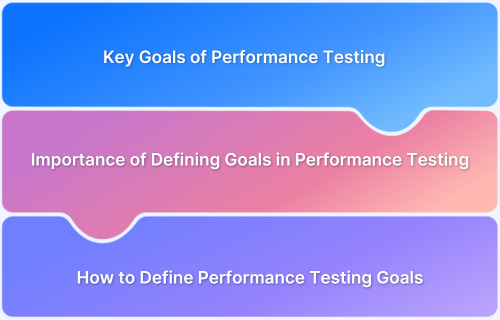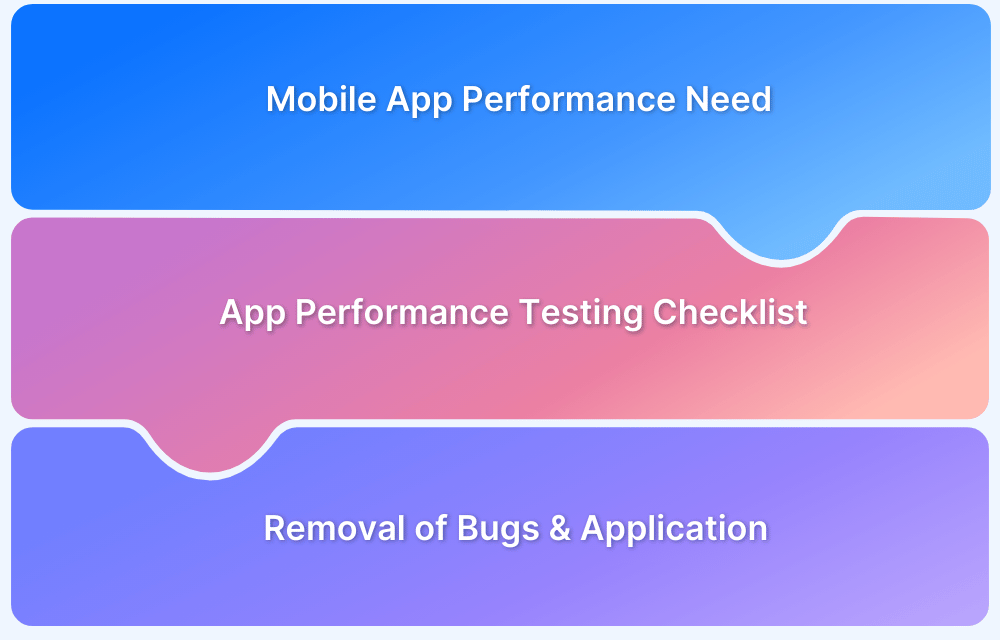Mobile app performance is critical for delivering an optimal user experience. It refers to how well an app operates on a device, considering factors like speed, stability, responsiveness, and resource usage. It is essential for ensuring a smooth, user-friendly experience.
Overview
Key Aspects of Mobile App Performance:
- Load Time: How fast the app starts and displays content after the user taps the icon.
- Stability: Frequent crashes or freezes and the app’s error handling capability.
- Responsiveness: How quickly the app responds to user actions, such as taps or swipes.
- Resource Usage: How much CPU, memory, and storage the app consumes.
Importance of Mobile App Performance:
- User Experience: Poor performance frustrates users, leading to app abandonment.
- User Retention: High-performing apps are more likely to keep users engaged.
- App Success: App performance significantly impacts its overall success.
- Business Goals: An optimized app supports business objectives, like boosting sales or customer engagement.
This article discusses the importance of mobile app performance and provides a step-by-step guide with tools and best practices.
What is Mobile App Performance?
Mobile app performance refers to how well an app functions on mobile devices and meets technical expectations. It includes speed, responsiveness, stability, and performance across different environments.
Key performance areas include:
- Load Time & Interactivity: Measures how quickly the app launches and becomes usable.
- Responsiveness & Latency: This refers to how quickly mobile apps, like real-time and cloud-based apps, react to user input.
- Stability: Ensures consistent behavior across devices and conditions, with minimal crashes.
- Resource Use: Involves efficient use of memory, CPU, and battery, especially on low-resource devices.
- Network Efficiency: Focuses on smooth performance by adapting to varying network conditions
Also Read: How to check Website Loading Time
Why App Performance Matters
App performance is crucial for user satisfaction, engagement, and retention. Even small performance issues can significantly impact an app’s success.
- User Retention: Poor performance leads to uninstalls, with users opting for apps that meet their needs quickly and seamlessly.
- Impact on Engagement: A delay in load time can decrease page views, customer satisfaction, and conversion rates, directly impacting overall engagement.
- User Frustration: Performance issues often go unnoticed by users, leading to frustration and app abandonment.
- Navigation and Functionality: Fast loading times and smooth navigation encourage users to explore more app features, increasing overall interaction.
- Loyalty and Retention: Apps that perform well are more likely to build higher user loyalty, resulting in long-term usage.
Understanding the impact of performance on these factors is essential for delivering a successful app.
Key Performance Indicators for Mobile App Performance
To ensure that your mobile app is performing optimally, tracking key performance indicators (KPIs) is crucial.
These metrics help identify areas for improvement and ensure a smooth user experience. Below are some critical KPIs to monitor:
- Application Response Time: Measures how quickly the app reacts to user actions and loads content. Faster response leads to a smoother experience.
- App Crashes: Tracks how often the app crashes and the circumstances around them. Fewer crashes indicate better reliability.
- Throughput: Measures the amount of data the app processes in a given time, indicating how well it handles network variations.
- Time to First Byte: Time taken for the first data byte to return after a request. Faster times indicate a well-performing backend.
- API Latency: Measures the delay between user actions and server responses. Shorter delays are crucial for real-time apps.
- Battery Usage: Tracks how much battery the app consumes. Low battery usage helps retain users.
- Memory Consumption: Measures how much memory the app uses. Excessive usage can cause slowdowns and crashes.
- Load Times: Time taken for the app to load fully. Faster load times lead to a smoother user experience.
- DNS Lookups: Time taken to resolve a website’s domain into an IP address. Faster lookups improve overall app speed.
- App Start-Up Time: Time between opening the app and seeing its content. Fast start-ups create a positive user experience.
Must Read: Response Time Testing in Software Testing
Importance of Mobile App Performance Testing
Mobile app performance testing is essential to identify and resolve issues, improving speed and efficiency. Key reasons why it is necessary:
- Optimizes Resource Management: Ensures efficient use of memory, CPU, and battery, preventing overloads and maintaining responsiveness.
- Assesses Scalability: Tests app performance under increased users and data, preventing slowdowns or crashes during high usage.
- Detects Latency Issues: Identifies delays in network, server, or rendering, ensuring smooth data processing and interactions.
- Validates Load Handling: Tests app performance under heavy load, spotting potential weaknesses that may cause crashes.
- Ensures Consistency Across Environments: The app works well on various devices, OS versions, and network types, providing a consistent user experience.
- Enhances Long-Term Stability: Detects performance degradation over time, helping maintain smooth performance as new features are added.
How to Perform App Performance Testing
App performance testing helps evaluate how well an app handles load, speed, and overall user experience. Follow these steps to ensure efficient performance testing:
- Set Performance Goals: Based on app needs and user expectations, focus on key metrics like response time and error rates.
- Think Like a User: Simulate real-world conditions such as peak usage, different locations, and network variations.
- Pick the Right Tools: Choose tools like JMeter or LoadRunner that match your testing setup.
- Set Up the Right Test Environment: Create a test environment similar to production for accurate results.
- Write Test Cases: Cover various devices, networks (3G, Wi-Fi), and traffic levels to simulate real user scenarios.
- Run the Tests: Observe how the app performs under load, paying attention to stress behavior.
- Watch and Review: Monitor key metrics for delays, crashes, or anomalies during the test.
- Fix and Test Again: Address issues found, then retest to ensure improvements are effective.
- Keep Records: Document test cases, results, and changes. Automate future tests with platforms like BrowserStack.
Tools for Mobile App Performance Testing
Some of the top tools for mobile app performance testing are mentioned below:
Tools for Mobile App Performance Testing
- BrowserStack App Automate
- Appium
- Microsoft App Center Test
- BlazeMeter
- Apache JMeter
- Perfecto Mobile
- TestFairy
- New Relic Mobile
Below is a detailed description of each of these tools with their pros and cons to help you make an informed decision.
1. BrowserStack App Automate
Mobile app performance testing ensures smooth operation in real-world conditions. Unlike emulators, real device testing identifies issues like battery drain, overheating, or lag. BrowserStack allows testing on thousands of real devices to meet performance expectations.
Key Features:
- Real Device Testing: Test on their real device cloud, ensuring accurate performance simulation.
- App Profiling: Track real-time metrics like CPU, memory, and battery usage.
- Detailed Performance Reports: Receive clear reports to identify performance bottlenecks.
- Interactive Debugging Tools: Use session replays and graphs to troubleshoot performance issues.
Why You Should Choose BrowserStack for Mobile App Performance Testing:
- Comprehensive Reports: Receive detailed reports to understand and fix performance issues.
- Easy Setup: Upload your app, and start testing within minutes with BrowserStack’s simple dashboard.
- Support for Real User Conditions: For accurate testing, simulate real network conditions, such as 3G, 4G, and Wi-Fi.
- Flexible Testing Options: Manual or automated testing is available, offering complete flexibility.
Verdict: BrowserStack is perfect for real device testing and allows you to quickly test mobile app performance without managing physical devices.
2. Appium
Appium is an automation tool for testing mobile app performance. It can be used for native, hybrid, and mobile web apps.
You can write tests in different programming languages. It also fits into CI/CD pipelines, so your app’s performance can be checked regularly.
Key Features:
- Test on both Android and iOS devices.
- Run parallel tests to simulate multiple users.
- Integrates with CI/CD tools for continuous performance monitoring.
Pros:
- Open-source and free to use.
- Supports multiple programming languages.
- Strong community support for troubleshooting.
Cons:
- Requires technical skills for setup.
- Limited performance data without third-party tools.
- May run slower compared to dedicated performance testing tools.
Verdict: Ideal for teams seeking complete control and cross-platform testing. It works well with existing CI pipelines but requires third-party tools for detailed performance insights, as it doesn’t provide app load times by default.
3. Microsoft App Center Test
Microsoft App Center Test is a cloud-based tool designed for performance testing on real devices. It focuses on app launch times, UI responsiveness, and resource usage, making it perfect for monitoring performance changes between different app versions.
Key Features:
- Test on multiple real devices
- Measure app launch speed, UI responsiveness, and device resource use
- Integrates smoothly with Microsoft’s build and analytics tools
Pros:
- Seamless integration with Microsoft tools
- No need for maintaining hardware, as it’s cloud-based
- Provides detailed performance insights over time
Cons:
- Best suited for teams using Microsoft tools
- Limited flexibility for non-Microsoft tech stacks
- Lacks deep customization for unique test scenarios
Verdict: This tool works great for teams using Azure DevOps and Microsoft tools. It gives easy access to device testing and performance monitoring. However, you may not get all the features you need if you are not using Microsoft technologies.
4. BlazeMeter
BlazeMeter is a cloud-based performance testing tool that helps teams simulate high-traffic scenarios, allowing them to assess mobile app performance under stress.
It is ideal for large-scale performance and load testing, especially for apps expecting high user volumes.
Key Features:
- Simulates large-scale user traffic to test app limits
- Provides real-time performance analytics during tests
- Supports multiple testing protocols for thorough assessments
Pros:
- Great for stress and load testing with high user traffic
- Provides instant feedback and real-time metrics
- Cloud-based, making scaling easy for various tests
Cons:
- Focuses mainly on load testing, not functional testing
- Setup can be complex for smaller teams or tests
- More expensive for smaller teams compared to alternatives
Verdict: It is perfect for teams that need large-scale performance and load testing for apps with high user traffic. However, it does not offer thorough functional testing and may not be suitable for smaller-scale testing.
5. Apache JMeter
It is an open-source tool for mobile performance testing. It is well-known for its load testing features. It lets teams simulate heavy user loads and stress test mobile apps in extreme conditions.
Key Features:
- Simulates heavy user loads to test app performance under stress
- Supports multiple protocols for testing different app performance aspects
- Provides detailed performance reports with visual graphs
Pros:
- Free and open-source
- Supports multiple testing protocols
- Powerful load testing with in-depth performance analysis
Cons:
- Requires technical expertise for setup
- Can be resource-heavy for large-scale tests
- The user interface is not as intuitive as some other tools
Verdict: It is great for teams with advanced testing needs. However, it does not offer the same ease of use as more user-friendly performance tools. It requires more setup and is not ideal for quick testing.
Also Read: Front-End Testing Strategy: A Detailed Guide
6. Perfecto Mobile
It is designed to test mobile app performance under actual conditions. It simulates various network conditions and device states, like low battery or interruptions, helping teams see how these factors affect app performance.
Key Features:
- Tests app performance under different network conditions
- Offers detailed insights into load times and resource usage
- Integrates with CI/CD pipelines for continuous testing
Pros:
- Realistic testing in diverse, unpredictable conditions
- In-depth analysis of network and device state impacts
- Supports continuous testing in CI/CD workflows
Cons:
- Steep learning curve for new users
- Takes time to master
- May feel overwhelming for those needing quick, simple tests
Verdict: Perfecto Mobile suits individuals requiring ongoing testing in their delivery pipeline. But it is not ideal for teams seeking a straightforward, uncomplicated configuration.
Learn More: What is Android Performance Testing?
7. TestFairy
TestFairy helps you test mobile app performance while giving clear visual feedback. It works for both iOS and Android apps. You get performance data like CPU, memory, and network usage. It also records video of test sessions, so you can see how the app behaves in real time.
Key Features:
- Shows detailed metrics on CPU, memory, and network usage
- Lets you send test builds directly to testers
- Combines crash reports with performance data for better analysis
Pros:
- Video helps you spot UI or performance issues quickly
- Works across both iOS and Android, keeping tests consistent
- Brings crash data and performance insights together in one place
Cons:
- Video recording may slow down performance slightly during tests
- Not built for large-scale stress or load testing
- Offers fewer options for fine-tuning compared to dev-focused tools
Verdict: Good for QA teams and product managers, providing insights into real app usage and feedback with visual proof. However, more advanced tools may be needed for apps with heavy traffic or backend stress.
8. New Relic Mobile
New Relic Mobile monitors app performance, tracking crashes, errors, response times, and user interactions.
It integrates with other New Relic tools to give a complete view of mobile and backend performance, helping identify and resolve issues early.
Key Features:
- Tracks crashes, error rates, and network latency in real time
- Monitors user actions, load times, and data transfer speeds
- Lets you set smart alerts to catch slowdowns quickly
Pros:
- Shows performance data across both the frontend and backend
- Gives deep insights to improve app speed and reliability
- Works for both small projects and large mobile platforms
Cons:
- Needs time to set up and learn, especially for new users
- May be too complex for simple apps with basic needs
- Some key features cost more under premium plans
Verdict: New Relic Mobile is ideal for teams using New Relic for backend monitoring, offering a full view of app and service performance. However, it may be too advanced for basic tracking needs.
Challenges in Mobile App Performance Testing (With Solutions)
Below are the challenges in mobile app performance testing and their corresponding solutions:
1. Device and OS Fragmentation
Testing on a limited set of popular devices often overlooks real-world issues such as varying chipsets, memory limits, and custom OEM layers.
Solutions
- Create a risk-based device matrix covering low-end, mid-range, and flagship devices for both Android and iOS.
- Group test coverage by hardware capability (GPU, storage, refresh rate) rather than brand.
- Automate test suites across multiple OS versions and CPU architectures (arm64, x86).
- Maintain per-device performance baselines to detect regressions within each category.
2. Network Variability and Offline Conditions
Perfect Wi-Fi in testing hides real user conditions like packet loss, high latency, and intermittent disconnections.
Solutions
- Simulate real network conditions by adding latency (150–400 ms), loss (1–5%), and bandwidth limits.
- Implement resilient network strategies such as exponential backoff and retry with jitter.
- Use aggressive caching with HTTP headers like ETag and Cache-Control.
- Design for offline use by queuing requests locally and syncing when back online.
3. Slow Cold Start and Time-to-Interactive
Apps that take too long to launch lose users quickly. Heavy initialization and blocking I/O are common culprits.
Solutions
- Profile startup phases to identify bottlenecks in onCreate, dependency loading, or UI rendering.
- Defer noncritical initialization such as analytics or remote config until after the first screen.
- Use lazy injection and baseline profiles (Android) to reduce JIT compilation overhead.
- Simplify the first rendered layout using placeholders or skeleton screens for faster perceived load time.
4. Jank and UI Thread Contention
Dropped frames and unresponsive gestures occur when CPU-heavy work blocks the main thread.
Solutions
- Track frame timings using Choreographer or JankStats (Android) and Core Animation FPS (iOS).
- Move CPU-intensive work like image decoding or JSON parsing to background threads.
- Simplify layouts and reduce overdraw by flattening hierarchies.
- Downsample images to match target view sizes to avoid runtime scaling overhead.
5. Memory Leaks and Out-of-Memory Errors
Persistent memory leaks or large allocations can crash apps, especially on low-RAM devices.
Solutions
- Run tests on memory-constrained devices and monitor heap usage.
- Eliminate context leaks by avoiding static references to Activities or Views.
- Use lifecycle-aware scopes for coroutines, observers, or background tasks.
- Manage bitmaps carefully by decoding to exact display size and freeing unused resources promptly.
6. Battery Drain and Background Overwork
Continuous background processing, high GPS sampling, or frequent wakeups can drain the battery and trigger OS restrictions.
Solutions
- Batch background work using WorkManager (Android) or BGTaskScheduler (iOS) with network and charging constraints.
- Optimize sensor usage by lowering GPS update frequency and using fused location APIs.
- Profile power consumption via Energy Profiler (Android) or Energy Log (iOS).
- Implement exponential backoff and task throttling for periodic jobs.
7. Performance Regressions in CI/CD
Even small changes can degrade app startup or animation performance if not continuously monitored.
Solutions
- Define performance budgets (e.g., cold start ≤ 2 s, p95 frame ≤ 16 ms) and fail builds exceeding them.
- Maintain baseline metrics per device class to detect relative regressions.
- Automate synthetic user journeys for top workflows such as login, search, and checkout.
- Require performance impact reports for third-party SDK updates.
8. Heavy Third-Party SDKs
Third-party SDKs can slow startup, increase memory usage, and generate unwanted network calls.
Solutions
- Initialize SDKs lazily after the first frame rather than on app launch.
- Isolate SDK calls behind feature flags to measure impact and disable if necessary.
- Limit verbose logging and configure sampling to reduce runtime overhead.
9. Large Media and Payload Sizes
High-resolution images and uncompressed assets can bloat load times and memory usage.
Solutions
- Use modern image and video formats such as WebP, HEIF, or AV1.
- Deliver responsive image sizes from the server based on screen density.
- Apply intelligent prefetching over Wi-Fi with controlled cache limits to balance speed and memory.
- Compress JSON payloads using gzip or Brotli to reduce network latency.
10. Real-World Usage Variability
Users frequently background apps, switch networks, or rotate screens—actions that standard tests may overlook.
Solutions
- Run chaos scenarios that include backgrounding, orientation change, and network switches.
- Conduct long-duration (soak) tests to identify memory creep or CPU drift.
- Implement idempotent actions for sensitive flows (e.g., payments, uploads) to handle retries gracefully.
These challenges highlight why performance testing must go beyond functional correctness. Real-world users operate under unpredictable conditions—diverse devices, volatile networks, and fragmented OS environments. Rigorous, scenario-driven testing ensures that mobile apps remain fast, responsive, and stable across every situation.
Read More: Challenges in mobile app testing
Best Practices for Mobile App Performance Testing
Here are key best practices to ensure your app performs optimally under various conditions:
- Test on multiple devices and OS versions: Ensure the app functions well across Android, iOS, and Windows versions, considering various screen sizes and hardware.
- Use real network conditions: Simulate real-world network speeds (e.g., 2G, 3G, Wi-Fi) to evaluate performance under varying connection qualities.
- Prioritize performance under heavy traffic: Test how the app handles stress and high traffic to identify potential bottlenecks and performance issues.
- Monitor memory and CPU usage: Keep an eye on the app’s memory and CPU consumption to prevent excessive resource usage that could impact performance or drain battery life.
- Integrate with continuous testing: Automate performance testing as part of your CI/CD pipeline to detect issues early and maintain consistent app quality during updates.
Conclusion
To conclude, mobile app performance testing is essential. It ensures your app runs smoothly across different devices, networks, and conditions. Focus on key areas like cross-platform compatibility and load handling.
Testing real-world scenarios, such as interruptions or sudden traffic spikes, helps identify issues early. By following these best practices, developers can optimize app performance.
This leads to higher user satisfaction and better app reliability in diverse environments.







